JUNE 2022
8 inch Aperture Telescopes part 1 – telescopes using only mirrors.
An article in the author’s Astronomy Digest https://www.ianmorison.com
Ideal first telescopes for amateur astronomers are 80 mmrefractors, 130 or 150 mm Newtonians or 127 mm Maksutovs. These allow one to view wide field objectssuch as the Pleiades Cluster and Andromeda Galaxy and give lovely views of theMoon. Amateurs then often get what is called“aperture fever” – wanting to purchase a larger telescope perhaps tobetter view the planets. Many willsettle for one of around 8 inches or 200mm aperture and this series of articles aims to describe the many varietiesavailable along with their advantages and disadvantages. Though 200 mm aperture refractors areavailable at very great cost they will not be covered.
Telescopes that only use mirrors to form an image have theadvantage that there can be no traces of chromatic aberration and there areonly two surfaces to be figured so minimising any wavefront errors which wouldharm the image quality.
Newtonian Telescopes
These provide the best “aperture/cost” relationship but, sadly these days, tend to be neglected for more sophisticated telescope types. A Newtonian on a Dobsonian mount provides one of the very best “performance for money” telescope that it is possible to buy. A Sky-Watcher Skyliner 200P, as seen in Figure 1, at a cost of £389 is an excellent buy and has a focal ratio of f/5.9.
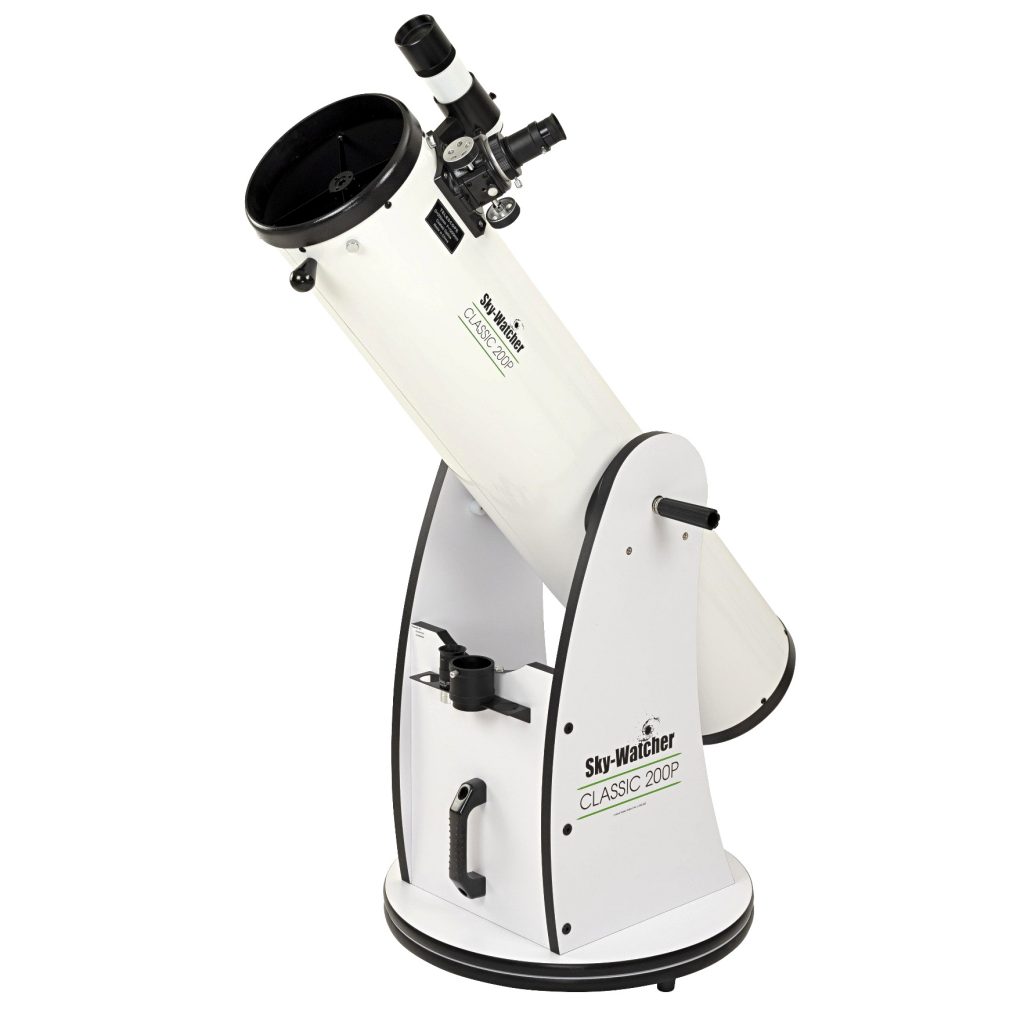
The same telescope can be bought mounted on an equatorial mount such as the Sky-Watcher EQ5-PRO at a cost of ~£1,000. The SkyWatcher Explorer-200PDS, f/5 Newtonian Tube assembly, costing ~£439, has a larger secondary mirror and dual speed Crayford Focuser. Celestron produce the “Advanced VX8” f/5 Newtonian, seen in Figure 2, mounted on a computerised equatorial mount for £2,195.
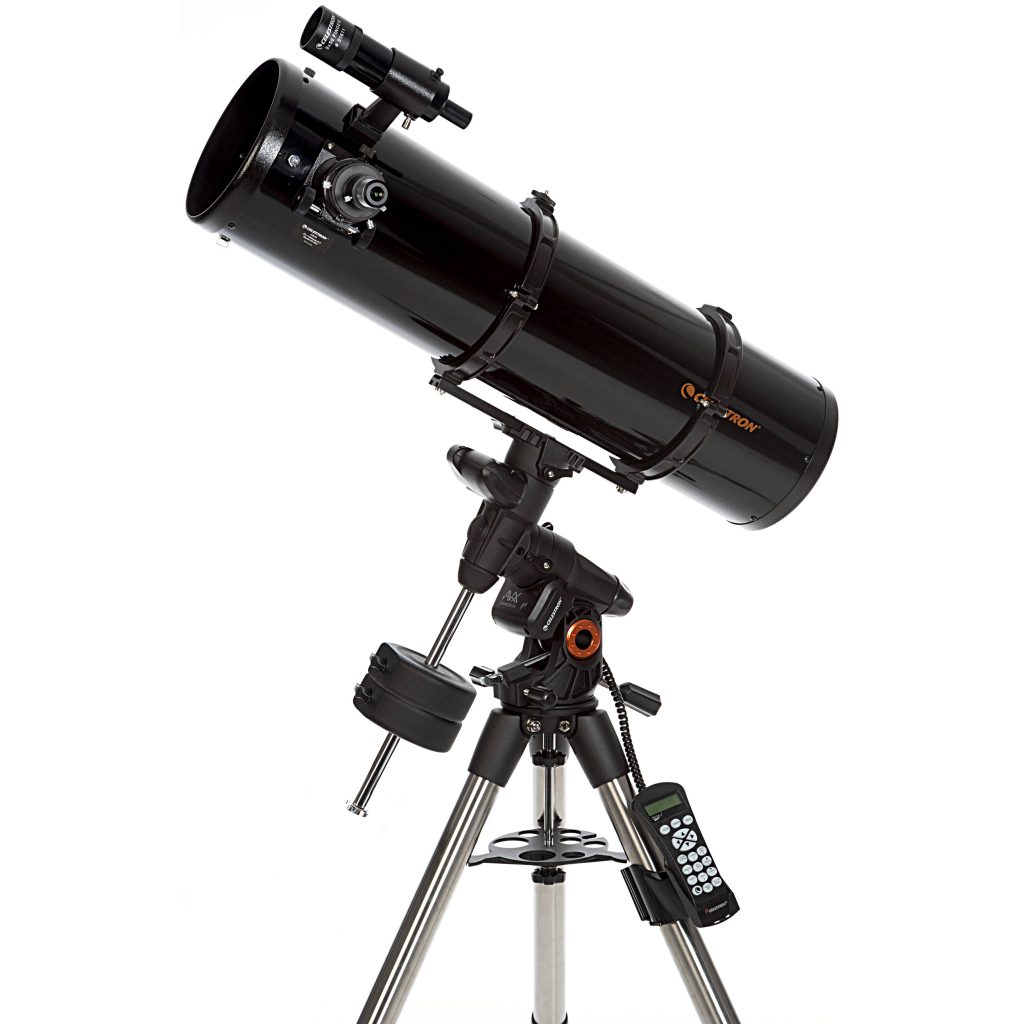
A very high quality 200 mm, f/4.5, Newtonian is the CT8 from Orion Optics (UK) which uses a carbon fibre tube and employs 1/10 wave, HiLux coated mirrors. Seen in Figure 3, it costs from £1,470 and includes a fan cooling system. I have an Orion Optics (UK) 8 inch f/6 Newtonian which I bought in 2002 having HiLux coated mirrors which are still in superb condition.
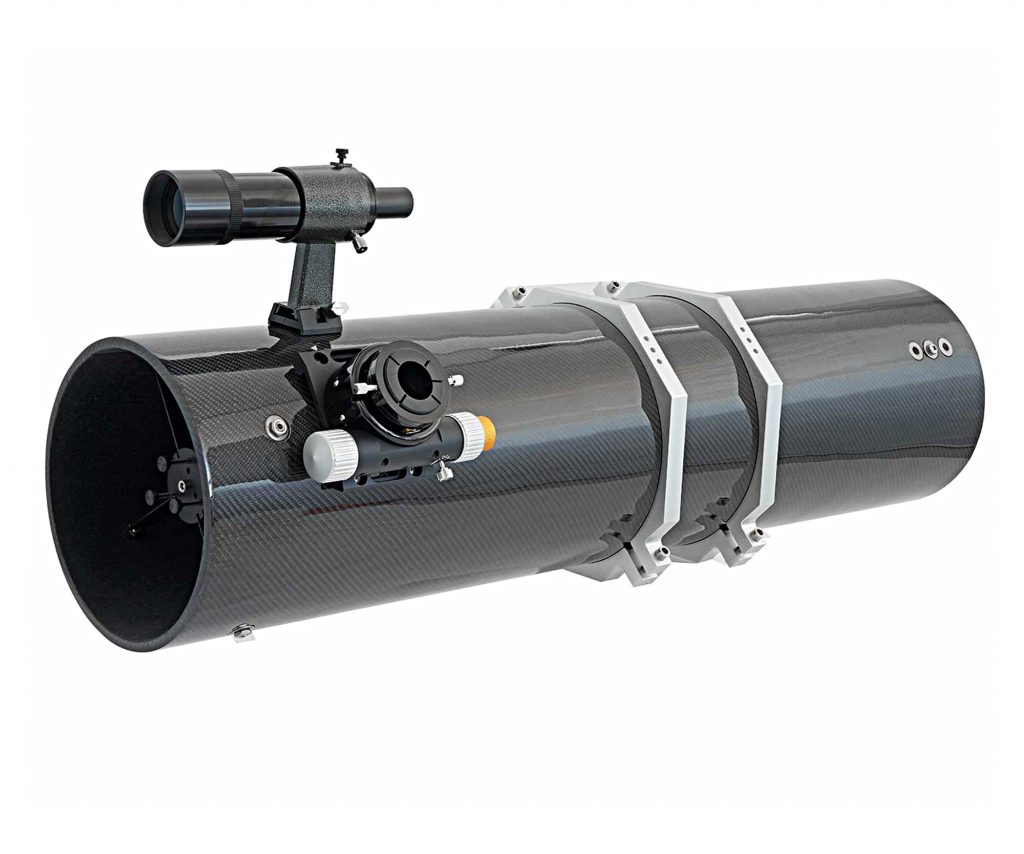
Alternative Newtonians are those with focal ratios of around f/4 which are superb for imaging but require either a Baader Coma corrector or, better but more expensive, Wynne corrector to eliminate coma towards the edge of the field of view when using wide field eyepieces or imaging. An excellent example is the “Altair 8 inch, f/4, Photo Newtonian Telescope” seen in Figure 4. This has a relatively large secondary mirror to reduce vignetting and will require a coma corrector when imaging – such as the recommended, three element, “Maxfield Newtonian Coma Corrector 0.95x” at a total cost of £700. Its image circle will easily cover an APS-C sized camera sensor. If I did not already have a “similar in performance” telescope I would certainly buy one of these.
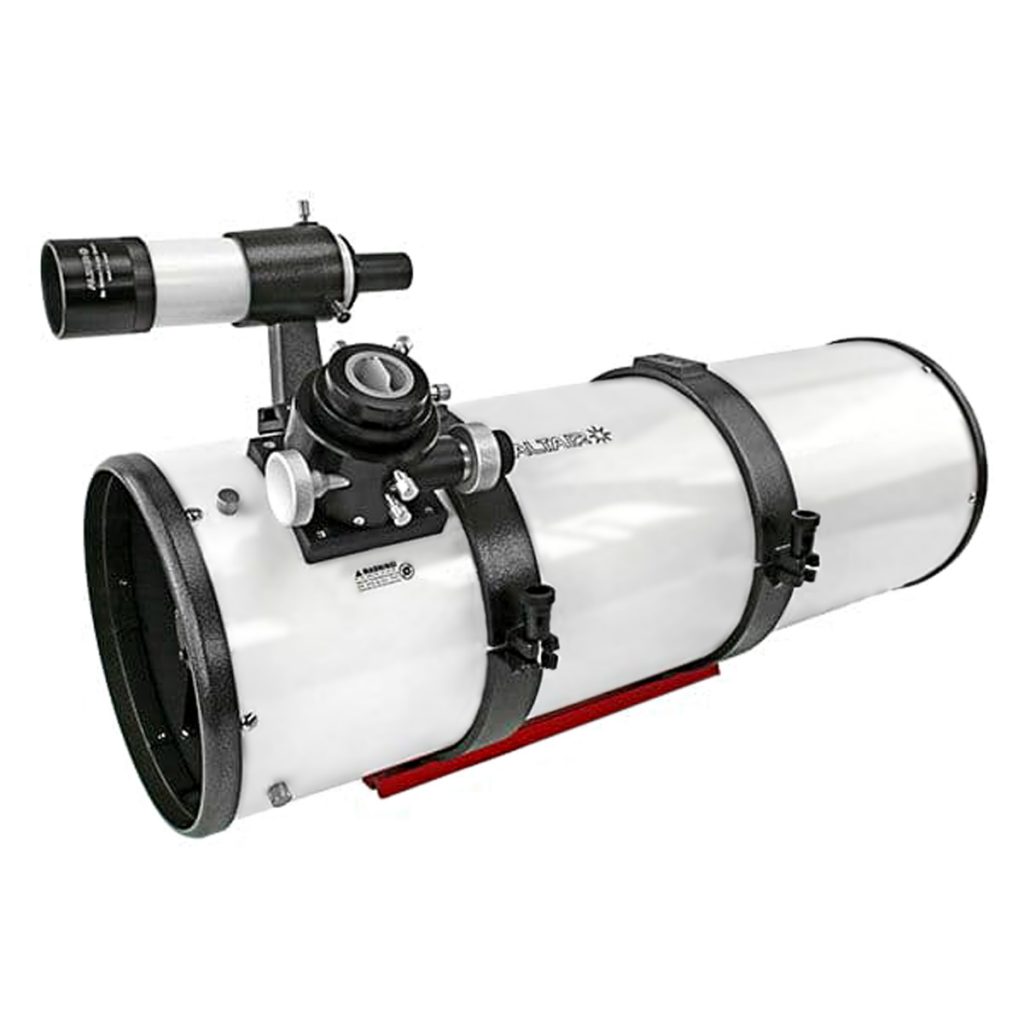
At the very “top end” of 8 inch imaging Newtonians is the Orion Optics (UK) AG8 Astrograph seen in Figure 5. This incorporates a 3 inch diameter Wynne corrector (to reduce vignetting) that allows the telescope to be used with “full frame” sensor cameras. Though costing ~£4,000 this is, perhaps, the ultimate imaging Newtonian.
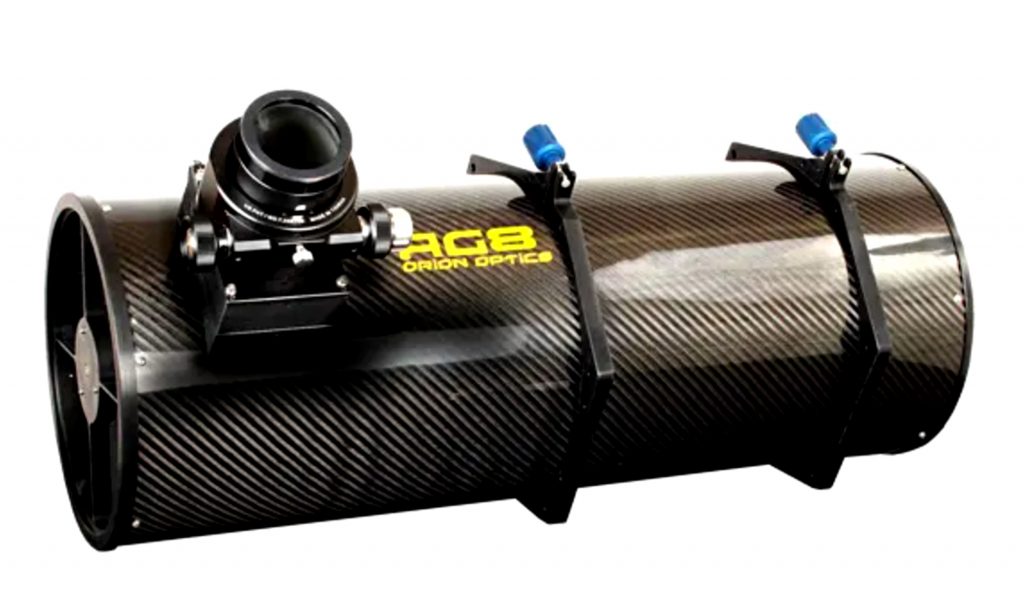
Cassegrain Telescopes
These use a parabolic primary mirror and hyperbolic secondary mirror. Those easily available are made by a Taiwanese Company, Guan Sheng Optical (GSO) and are sold under a wide variety of brand names such as “Stellar Lyra”. The 8 inch version costs ~£879 and has a high focal ratio of f/12 giving a focal length of 2,436 mm so it is better suited for observing or imaging smaller angular sized objects such as the planets, globular clusters, planetary nebulae and distant galaxies. It is relatively light at an all up weight of ~20 lbs and has a 33% diameter secondary mirror, similar to that in Schmidt-Cassegrains. One real advantage compared to them is that there is no corrector plate to dew up. A second advantage is that, as the primary mirror is fixed, there can be no “image shift” when focussing. Even if employing a x0.8 focal reducer giving a focal ratio of f/9.6 longer exposures would be needed when imaging than with, say, an 8 inch Schmidt-Cassegrain with a x0.63 focal reducer (giving a focal ratio of f/6.3). They are thus less suitable for imaging than these or a Ritchey-Chrétien Telescope. Figure 6 shows the excellent tube baffles of the “Stellar Lyra” Cassegrain – which looks identical to their Ritchey-Chrétien telescope.
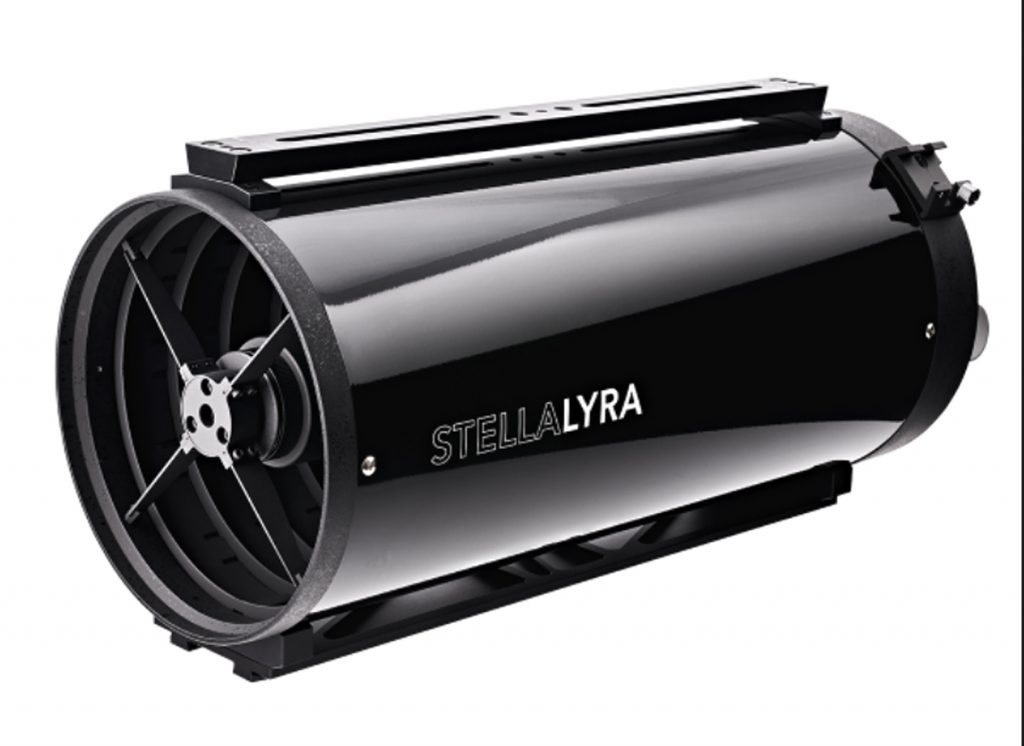
Ritchey-Chrétien Telescopes
These are a variant on the Cassegrain design but employ a hyperbolic primary mirror rather than a parabolic mirror. Used in many professional observatories and the Hubble Space Telescope they give a wide field without the problems of “coma” towards the field corners. Those readily available are, again, made by GSO and sold under a variety of brand names such as “Stellar Lyra”. However, to give a large un-vignetted field of view, their secondary mirror has a large, ~47%, diameter obstruction. This will reduce the “micro-contrast” of the image by taking light away from the central Airy Disk into the surrounding rings. Thus these telescopes are, perhaps, better optimised for deep sky imaging rather than visual use – but that is not to say that they cannot be used visually. Ritchey-Chrétien telescopes give a flatter field than a Schmidt-Cassegrain as the secondary mirror has less curvature and thus a lower amplification factor – typically x2.7 rather than x5. This means that field flatteners will not be needed except for large sensor cameras. I recently acquired one and there are two articles about it in the digest.
One advantage of these Cassegrain and Ritchey-Chrétien telescopes (as well as with Schmidt-Cassegrains) is that the eyepiece is at the rear of the telescope making for easier viewing than with a Newtonian or its variants. A further advantage is that, as the light path is folded within the tube assembly, they are shorter and so have a lower “moment of inertia” than Newtonians allowing less expensive mounts to be used to support them. They are also less susceptible to wind gusts. However, as the light traverses the optical tube assembly three times – as opposed to once for a refractor or twice for a Newtonian – it is important that the air inside the tube reaches ambient temperature otherwise tube currents will distort the stellar images. But, as the tubes of these telescope types are open, cool down times will be less than with, say, a Schmidt-Cassegrain.